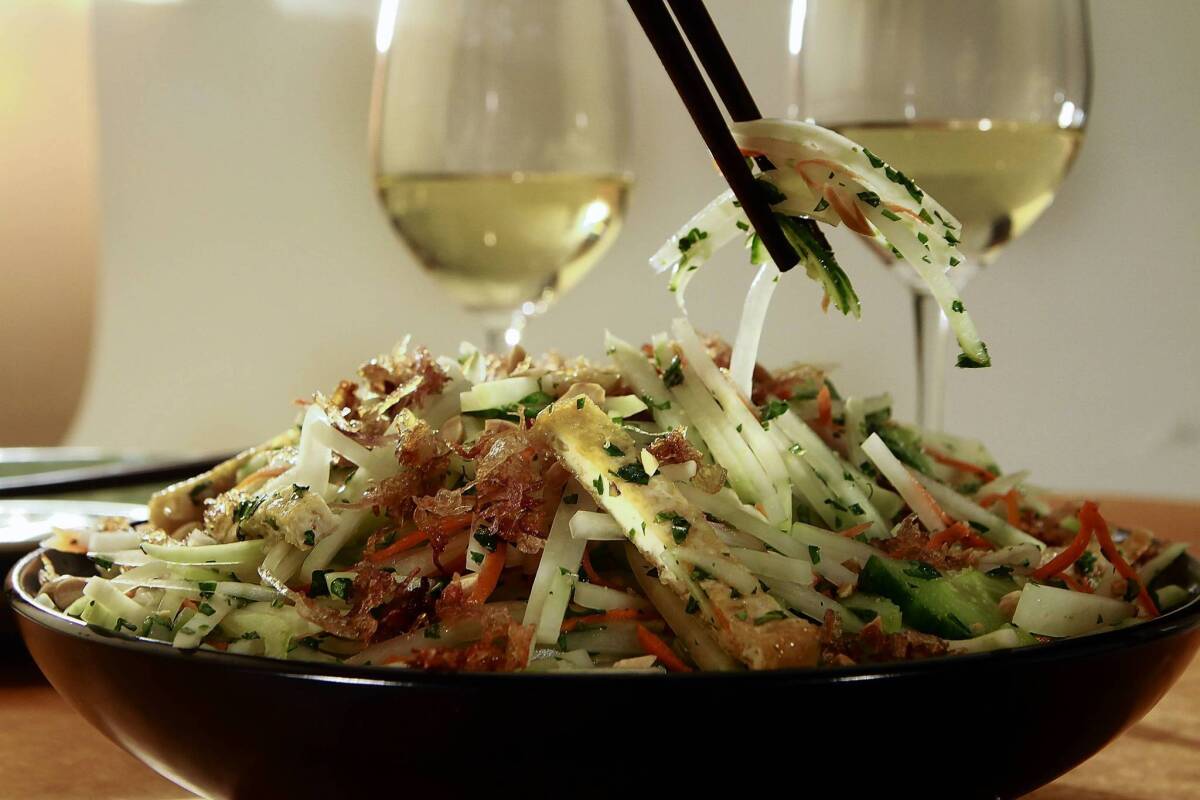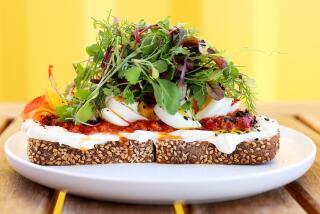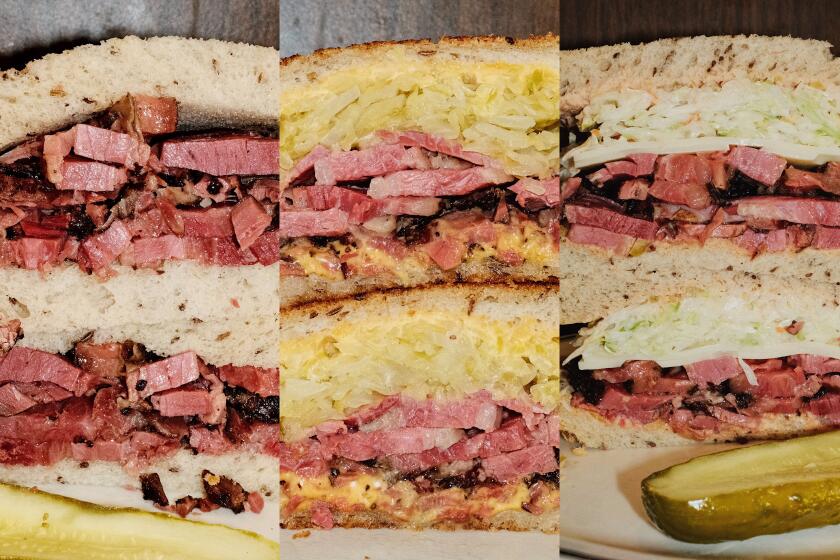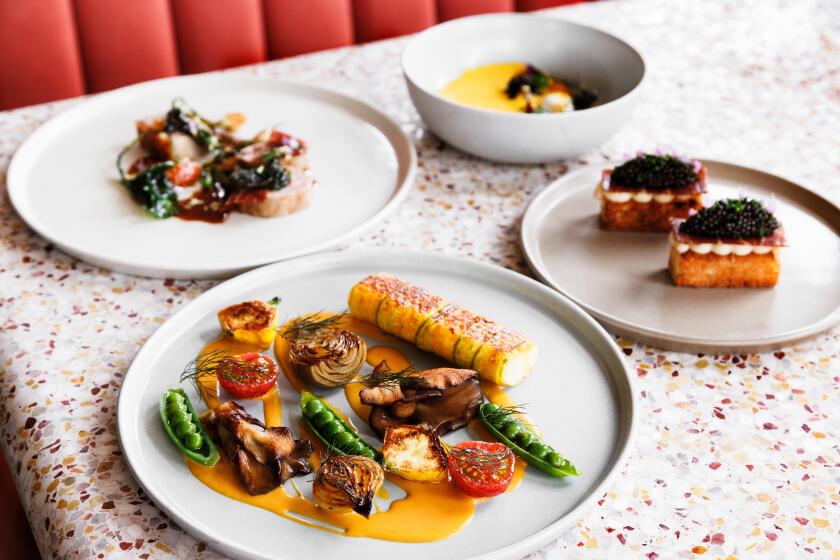Across the Table: Charles Phan’s wine list for Vietnamese cuisine has evolved

Subtle fresh spring rolls, a rollicking green papaya salad, comforting pig’s knuckle soup, fragrant lemon grass pork, “shaking” beef and caramelized shrimp — they’re all delicious but hardly the easiest dishes to pair with wines.
Unless, of course, you’re at Slanted Door, Charles Phan’s terrific restaurant in San Francisco. Slanted Door has always been different — modern, hip, uncompromising. It was one of the first Asian restaurants to buy the same quality ingredients that Chez Panisse or Zuni Cafe might use. And it was also one of the first, if not the first, to have a serious wine list.
After spending a couple of weeks exultantly cooking through Phan’s new and long-awaited “Vietnamese Home Cooking,” I called him to get his input on which wines would pair best with his terrific recipes.
The Slanted Door’s wine list started almost accidentally. Just before Phan opened the restaurant in 1985, he was having lunch at Zuni Cafe and noticed a big table of guys with about 20 bottles of wine. On a whim, he leaned over and asked if they knew of anyone who would be interested in helping him make a wine list. The name Mark Ellenbogen came up. He was just back in town after living in Italy and took the job as wine director, which he held for more than 25 years.
The first list was all Italian, but after six months, it wasn’t working. That’s when things got radical. Next up: a Riesling-driven list with a few other whites and some reds. No Chardonnay. And not a single wine from California.
“Back then,” Phan says, “people thought we were being snobby, leaving Napa out.” But he didn’t have much storage and, on a shoestring budget, he couldn’t have a big list. And Napa wasn’t exactly making the kinds of wines that went well with Vietnamese food.
Phan and Ellenbogen eventually decided to organize the wines by characteristics — dry, floral, delicate, spicy, etc., instead of by grape or country — with dry at the very bottom.
“If you look at the list today,” Phan says, “it still has some of the same characteristics.”
Until last year that list was a legal-size sheet of 120 wines. Wine director Chaylee Priete has since doubled the labels, and it’s still heavily Riesling-based. “However,” explains Phan, “there’s now a small but firm emphasis to find some local winemakers who farm ecologically and meet our criteria for low-alcohol, high-acid, low-tannin wines that pair with our food.”
From experience, I’m well aware that it’s not easy pairing wines with Vietnamese food, which is often sweet, tart and fiery, all at the same time. That’s why I was so curious about Phan’s favorite wine matches for specific recipes.
“Wines with high alcohol (anything over 14%) or low acidity are not going to work with this spicy and sweet food,” he cautions.
When guests balk at ordering unfamiliar wines, Phan offers to let them try something dry and something fruity side by side and then choose which they thought worked better with the food.
“If you don’t do an experiment like that,” he says, “you won’t see how wonderful the changes are, how the wine makes the food more interesting.”
More to Read
Eat your way across L.A.
Get our weekly Tasting Notes newsletter for reviews, news and more.
You may occasionally receive promotional content from the Los Angeles Times.










